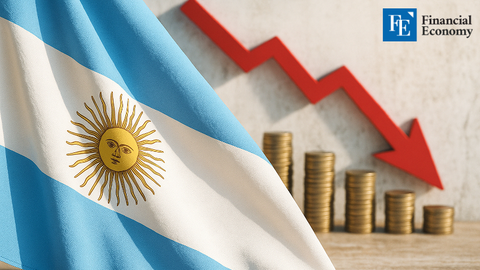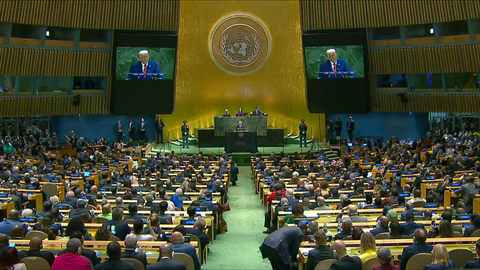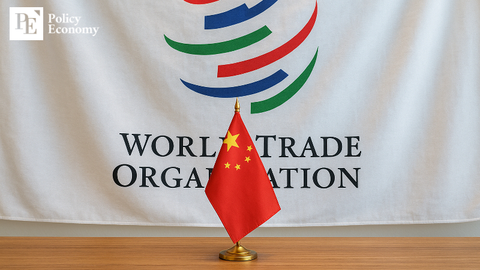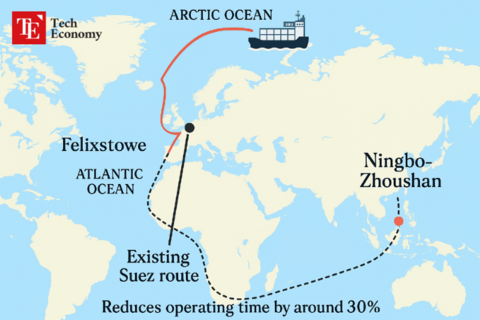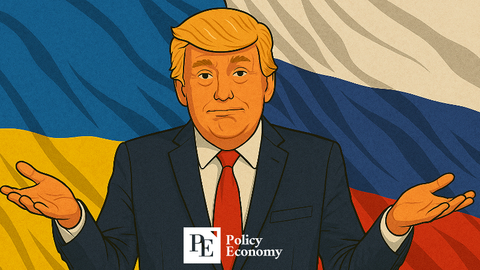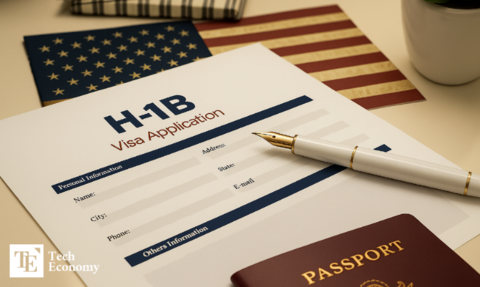“Eighteen Days to Europe” – China Opens First Arctic Shipping Route, Busan Faces Test as New Maritime Corridor
Input
Modified
Last Remaining Sea Passage on Earth, the Arctic Route Travel Time Cut by More Than Half Compared With Existing Routes Geopolitical Safety and Other Strategic Advantages
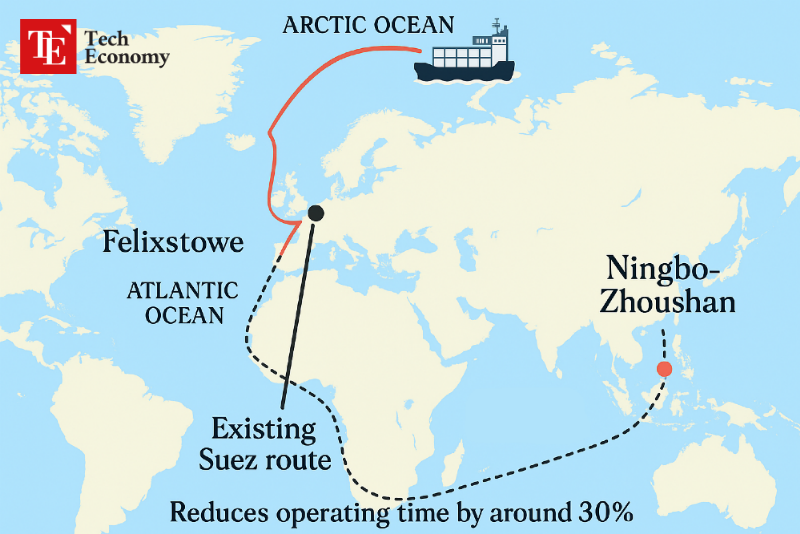
Once the realm of exploration, the Arctic passage is being transformed into a coveted “Ice Silk Road” sought after by advanced economies. With China opening the world’s first high-speed Arctic route linking Europe and Asia, the dynamics of global shipping are shifting. The Arctic corridor’s core advantage lies in the dramatic reduction of sailing distance between Asia and Europe compared to conventional routes. This translates into savings on freight and fuel costs while enhancing supply-chain agility, upending the economic rationale of traditional transshipment hubs. As China formally integrates the Ice Silk Road into commercial networks, attention is now turning to whether Busan, positioned at the nearest gateway to the Arctic, can emerge as a key departure hub.
From Ningbo to Europe in Just 18 Days
According to the state-run Global Times on the 24th, a container vessel named Sea Legend departed on the 22nd from Ningbo–Zhoushan Port in eastern Zhejiang Province bound for Felixstowe, the UK’s largest container terminal. This marks the official launch of a high-speed Arctic route between China and Europe. The voyage will take only 18 days—compared with 40 days via the Suez Canal, 50 days around the Cape of Good Hope, and 25 days using the Eurasian rail corridor.
The Sea Legend is scheduled to depart from major Chinese ports including Ningbo, Shanghai, Qingdao, and Dalian, then cross the Arctic to arrive at key European ports such as Felixstowe, Rotterdam, Hamburg, and Gdansk. Zhou Xiaoping, Deputy Director of Dase Customs—an affiliate of Ningbo Customs—stated: “The cargo includes consumer goods, clothing, components, as well as advanced products such as energy storage cabinets and power batteries. By using this route, transport time can be reduced by roughly 30% compared to the Suez Canal.”
Ningbo Customs reported that the European Union remains the port’s largest trading partner. Between January and August this year, Ningbo’s trade volume with the EU totaled $460 billion, up 12% year-on-year, accounting for 18% of the port’s total external trade. Li Xiaobin, Chief Operating Officer of Sea Legend, stressed that the China–Europe Arctic corridor is shorter and more efficient than existing routes, significantly improving timeliness, reducing costs, and accelerating supply-chain velocity.
Relative geopolitical safety is another advantage. Li noted: “The regions traversed are politically and economically stable, minimizing risks from piracy, congestion, or conflict escalation. Fleet security is enhanced, the Ice Silk Road is now open, and a third China–Europe supply-chain corridor is secured.”
Restructuring of the Asia–Europe Supply Chain
The Arctic passage is often described as a path carved by human ambition, made possible by global warming and shrinking ice cover. The U.S. National Snow and Ice Data Center (NSIDC) reported that on the 16th, Arctic sea ice measured 4.71 million km²—1.74 million km² less than the 1981–2010 average of 6.45 million km². This represents an ice loss roughly equivalent to the landmass of Alaska.
The retreating ice has widened shipping lanes, and global interest has surged in the wake of repeated disruptions along traditional routes. In 2023, Yemen’s Houthi rebels attacked vessels transiting the Suez Canal, undermining confidence in the world’s busiest sea corridor. In 2021, the grounding of the Ever Given container ship blocked all two-way traffic through the Suez for an entire week. Such events have accelerated the search for alternative routes, with the Arctic corridor gaining traction.
Cargo volumes on the Arctic route are rising steadily. According to Russia’s Ministry of Transport, total cargo throughput reached 37.9 million tons last year, a record high. Transshipment cargo reached 3.08 million tons, a fifteen-fold increase from 200,000 tons in 2016. Though still dwarfed by the Suez Canal’s 1.57 billion tons in 2023, the growth trend is undeniable.
Shorter voyages naturally lower fuel costs. With lighter traffic, ships can sail without congestion, further reducing fuel consumption. A research team led by Professor Li Zhiwei at Sweden’s Chalmers University estimated fuel costs per voyage: approximately $340,000 on traditional routes, versus $230,000–250,000 on the Arctic route—a reduction of 25–35%. These time and cost savings transcend logistics expenses alone. Experts warn that as supply-chain structures between Asia and Europe are reconfigured, transshipment-dependent revenue models enjoyed by Southeast Asian, Indian, and Middle Eastern ports may collapse at unprecedented speed.
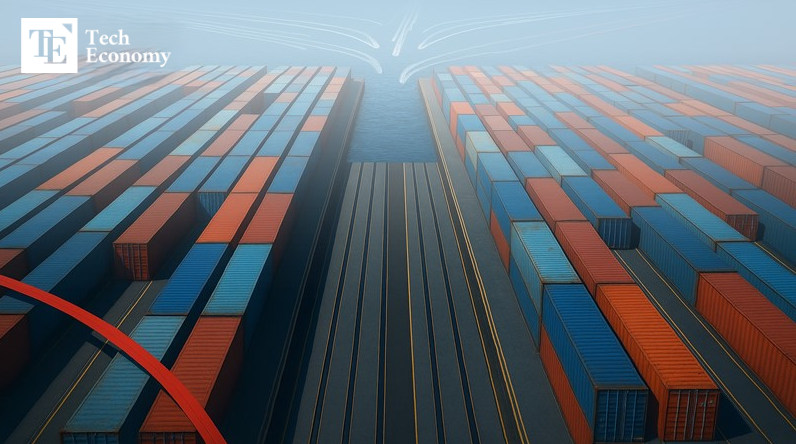
Busan’s Prospects as a Departure Hub
China’s Arctic shipping ambitions accelerated in 2018, when Beijing released its White Paper on China’s Arctic Policy. Although not an Arctic littoral state, China defined itself as a “near-Arctic country” and asserted its right to engage as a key stakeholder. In 2013, it joined the Arctic Council as an observer alongside South Korea and Japan. Je Junbo, Director of the Center for China–Europe Relations at Fudan University, noted: “Maritime transport through the Arctic helps avoid disruptions caused by sudden geopolitical crises in Europe. This corridor could become an important global public good to which China contributes, with nations such as South Korea and Japan able to collaborate in its development.”
For South Korea, the opening of the Arctic route presents both opportunity and challenge. The Lee Jae-myung administration has projected that year-round Arctic navigation will become feasible around 2030, designating its development as a national policy priority. Measured by distance, the economic case is strong: the conventional Suez route from Busan to Rotterdam spans 20,400 km and takes 30–34 days, while the Northern Sea Route (NSR), at 13,000 km, reduces the journey to 20–24 days. The government plans to conduct pilot Arctic voyages next year while accelerating the construction of Jinhae New Port to accommodate future cargo volumes. It has also pledged $550 million to build one icebreaker annually for five years.
According to the Ministry of Oceans and Fisheries, of South Korea’s 1.67 billion tons of trade cargo in 2023, 1.665 billion tons—or 99.7%—was transported by sea. Securing the Arctic corridor as an alternative maritime route could stabilize logistics flows and reduce bottleneck risks. The Arctic region also holds about 60% of Russia’s total oil and gas reserves, presenting long-term opportunities for energy diversification. Additionally, prospects for expanding deep-sea fishing and tapping marine resources could emerge.
Challenges remain formidable. Even in summer, unpredictable ice conditions may disrupt voyages, while in winter, icebreaker fees and insurance premiums rise and voyage times lengthen, eroding cost advantages. Some stretches are shallow, with minimum depths under seven meters, making them unsuitable for large container vessels.
Moreover, Arctic navigation is governed by Russian domestic law, requiring stringent procedures and continuous reporting during transit. Violations can result in suspension or seizure of vessels. For South Korea, the timing of Western sanctions relief on Russia is pivotal. Bae Kyuseong, Research Professor at Paichai University’s Korea–Siberia Center, cautioned: “Even if sanctions are lifted, the tightening military nexus between Russia and North Korea, U.S. strategic containment of China, and growing Russo–Chinese cooperation in the Arctic will repeatedly complicate South Korea’s choices. Overcoming these geopolitical hurdles is essential if the Arctic route is to gain momentum.”

